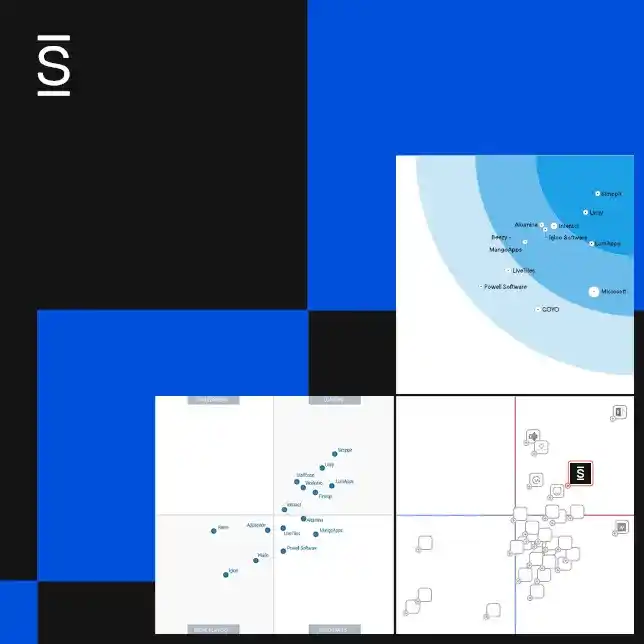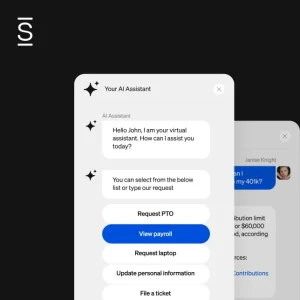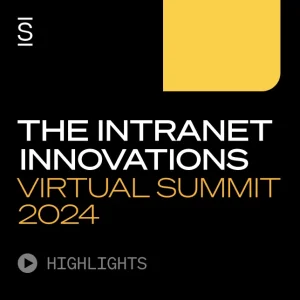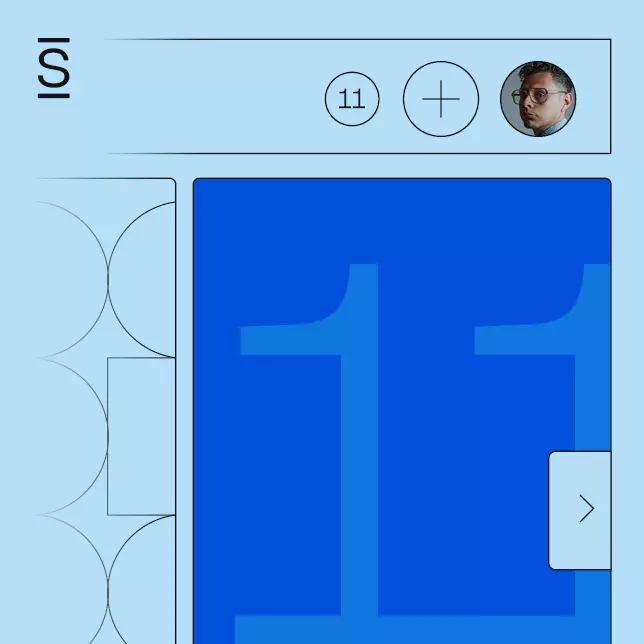Forrester Research just released a report that listed the most common intranet providers. We appreciate that they covered Simpplr. In the report they classified vendors in 3 categories:
Packaged applications: Effectively purpose-built, out-of-box intranets.
Customizable frameworks: Platform approaches that carry forward the SharePoint model: Give IT a configurable toolkit to play with, but the “intranet” still needs to be built.
Productivity Suite Extensions: Building front end UI on top of an existing infrastructure (e.g. SharePoint, Google Drive, Salesforce, etc.)
A few observations:
- This is a fair way to look at the market. Forrester did a good job framing the various approaches.
- We’re miffed that many of the vendors lied: Specifically, we know first-hand from our experience, platform vendors are disguising themselves as purpose-built intranets. We see that in accounts across the industry that haven’t deployed in well over a year.
- You must be one or the other. Despite multiple vendors claiming that their offerings fit for all three. We’ll explain later.
Any company researching modern intranets and looking to make a move needs to understand which model works best for them. In many ways, it is not much different from classic build-versus-buy trade offs where ultimately companies must choose between customization options for time-to-value and best-of-breed capabilities.
Simpplr is unapologetically, solely a “Packaged Application” (Although we prefer “Purpose-built Intranet”) and there are very important reasons!
Simpplr’s product strategy has always been very straightforward:
We want to create intranets employees love. And we want to create intranets that don’t fail.
If you think this sounds trite, let’s look what industry analysts are presenting:
Gartner claims 90% of intranets fail. And our internal research echoes this claim!

(For a limited time, we’re syndicating this specific research here).
Meanwhile Forrester claims that intranets are employee’s least liked software in the workplace:

We have this research available, too!
Both Forrester and Gartner are making the argument that traditional intranets are dead (or dying) and companies need to rethink how they think about intranets. Both are very good reads and worth your time if you’re in a planning phase.
Again, from Simpplr’s perspective, we want to create an intranet that employees love (even though they’re the most hated enterprise application) and that won’t fail (even when 90% of them do).
Key Drivers of Intranet Failure
Last year we did the most exhaustive study ever done on failed intranet deployments. Through our Why Intranets Fail research, where we worked with hundreds of practitioners and conducted root cause analysis on over 200 failed intranets. We learned the key drivers of failure. Some are operational, meaning it has nothing to do with technology. These include things like process governance, goal alignment, and executive engagement. Our strategy here has been to be more prescriptive in what works, proactively lean into our customers’ governance models, and transform our customer success function into a strategic advisor. The other reasons for failure are functional.
These include (in order):
- Poor UI
- no content governance
- lack of personalization
- multiple sources of truth
- dependencies of technical resources
- bad search
- failed implementations
Since this study, we’ve prioritized our product strategy around mitigating these risks. We’ve always been great at some things like UI, integrations, and search. But we’ve since added the industry’s first Auto-Governance Engine to prevent your intranet from becoming a content dumping ground and we’ve steadily improved our ability to personalize content and experiences. We’re confidently now able to deliver 5,000 personalized intranet experiences if a company has 5,000 employees.
Build vs. Buy
Here is the big learning! Most of these intranet failures are more attributable to the classic platform model than to features themselves. We jokingly say internally that an organization first needs to choose their religion. Are they going to continue with the classic SharePoint model (where their intranet is heavily customized by internal IT resources) or do they want a purpose-built intranet? Again, this is not too different from classic build-versus-buy trade offs weighing customization options vs. time-to-value and best-of-breed capabilities.
When you look deeper, here are the tradeoffs:
| Traditional IntranetIncludes Internal builds, SharePoint, and new platform tools for other ecosystems (e.g. Google, Salesforce, etc.) | Modern Intranet (like Simpplr) | Why it matters |
| IT built (or configured)Configurable platform, platform approach built by IT | Purpose Built (Out-of-the-box)Purpose-built workflows to drive engagement and prevent failure | This forces a Build vs Buy type decisionIt’s not evident on the onset and many vendors will tell you otherwise. But fundamentally customization forces this tradeoff. |
| Poor UXText-heavy, complex, and folder schemas frustrate employees and slow business agility. | Purposeful UXEasy to use, and easy to administer. Built-in collaborative approach to employee communications. | This is a top reason for intranet failureProducts need to be intuitive upon initial use – users have a low tolerance for complexity. Once a system is to be bad, we don’t go back! |
| Deployed in yearsAccording to Nielsen Norman, the average intranet takes an average 1.2 years to deploy! Not only does this consume resources, the risk of failure increases with every passing day. | Fast deploymentImmediate deployment, content creation in minutes. | High risk for failureMaintaining momentum is difficult. Leaders change, priorities change, and momentum can be lost. 1.2 years is not acceptable. More time = More risk of failure. |
| Portal ApproachLacks mobile-friendly delivery approaches that target employee work habits. | Multi-channel deliveryFlexible delivery approaches to drive consumption (e.g. mobile, notifications, Slack, Teams, push notifications, native newsletters, etc.) | You have to meet employees where they areTraditional portals are no good if you don’t have hooks to drive engagement. |
| Irrelevant InformationEmployees are forced to navigate all content. Targeting relies on traditional metadata, manual hardcoding, and filters. | Personalized ExperiencePersonalization goes beyond filters & metadata.. Personalization framework creates 1,000 targeted experiences for 1,000 employees. | Employees hate noise and clutterIrrelevant information hurts the experience, sucks employee time, and hurts future adoption. |
| Content Dumping GroundsClassic CMS approaches lack controls to prevent your intranet from becoming a junk drawer. | Auto-GovernanceSimpplr created the industry’s first Auto-Governance Engine which uses technology to automatically keep intranet content fresh and eliminates duplication. | Once users find outdated info – trust is goneLack of stringent content governance and processes lead to content dumping grounds, a top reason for intranet failure. |
| Technical debtEvery customization needs to be redone. This requires training/heavy resources when upgrading, patching, and maintaining. | True SaaS ApproachLimiting customization ensures you can incorporate latest innovations, UI, and security enhancements. | Inhibits continuous innovationHighly customized approaches suck up resources and make it difficult to keep current with newest features. Eventually it becomes obsolete. |
| IT DependentThe combination of platform tool scope-creep, customizations, and lack of internal designers typically create a complex, hard to use configuration. | Point-and-click AdministrationThe system is as easy to use as a blog. No training is required and it’s built for business users to administer. | This makes communications hardOftentimes, technical complexity creates a dependency on technical resources. This ultimately creates tradeoffs and backlogs so businesses can’t update news/knowledge at the speed of business. |
| Implicit Maintenance CostsThis model implies operating expense aligned with the platform. Additional resources are needed for the initial deployment and for ongoing maintenance. | Transparent Subscription PricingTransparent pricing without hidden SOWs or operating costs. | Total Cost of Ownership is usually hiddenTypically headcount and services engagements add up to cost more than software subscriptions. |
Unfortunately, there is a lot of confusion in the marketplace.
- Many providers will tell you that they fit into the ‘Purpose-Built’ intranet category. But buyer-beware! Some vendors disguise capabilities behind a service intensive business model. So their pricing model may seem attractive only to find later you get nickel-and-dimed with lengthy services engagement and configuration.
- Some vendors go to market as what Forrester called Productivity Suite extensions. So they may for example build custom UI that provides a front-end for existing SharePoint infrastructure. This may be beneficial for some organizations but know that anything built on a customized foundation still has the tradeoffs listed above.
- Some intranet providers are next generation SharePoints for different ecosystems. For example, there are multiple vendors vying to be the SharePoint for Google. Salesforce Communities provides a toolbox for customization on Salesforce.
Your first decision needs to be which model best fits your organization. Once you’ve done that we encourage you to do full diligence, assume no vendor can be all 3 (they can’t), be skeptical during demos, and insist you get your hands on trial environments!
















